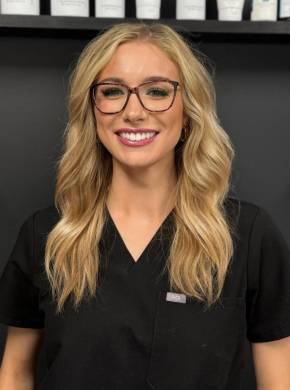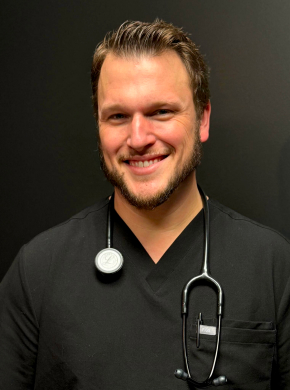In recent years, the fitness and biohacking communities have been buzzing with conversations around BPC-157 and SARMs (Selective Androgen Receptor Modulators). Influencers, athletes, and wellness experts are touting these compounds as breakthrough solutions for everything from muscle growth and recovery to joint healing and fat loss. But what does the science really say? Are these compounds the real deal, or is their popularity outpacing actual research? Let’s dive into the hard science, separate the facts from the hype, and explore why BPC-157 might be worth the excitement, while SARMs may warrant more caution.
BPC-157: The Healing Peptide
BPC-157, short for Body Protection Compound 157, is a synthetic peptide derived from a protein found in human gastric juices. It’s been generating interest due to its powerful regenerative properties. Initially studied for its potential to heal gastric ulcers, researchers quickly realized that BPC-157 could have a wide range of applications beyond the gut. It has been linked to faster healing of muscles, tendons, ligaments, and even nerves, making it a popular choice among athletes and biohackers looking to optimize recovery and longevity.
What sets BPC-157 apart from other compounds is its ability to stimulate angiogenesis, the formation of new blood vessels. This process plays a critical role in tissue repair and recovery, as improved blood flow allows more oxygen and nutrients to reach damaged tissues. In addition to this, BPC-157 has shown anti-inflammatory properties, which further aid in healing by reducing the swelling and pain that often accompany injuries.
The Science Behind BPC-157
While human clinical trials are still limited, the preclinical data is promising. One study, published in the Journal of Applied Physiology, found that BPC-157 could accelerate the healing of muscle injuries in rats, promoting tissue regeneration and reducing recovery time. Another study, published in Current Neuropharmacology, highlighted its neuroprotective effects, suggesting that BPC-157 might also play a role in healing nerve damage and potentially aiding in the recovery of brain injuries.
In terms of tendon and ligament healing, a study in the Journal of Trauma and Acute Care Surgery demonstrated that BPC-157 significantly improved tendon healing in rats. Researchers observed faster collagen production and better overall tendon repair, leading them to suggest that BPC-157 could be a valuable treatment for sports-related injuries or even chronic conditions like tendonitis.
Moreover, recent discussions on the Andrew Huberman Podcast have explored how BPC-157 might be beneficial not just for acute injuries but also for long-term health and wellness. Huberman, a neuroscientist, highlighted the peptide’s potential role in promoting systemic healing and its promise in treating conditions like irritable bowel syndrome (IBS) and even brain trauma. This broader spectrum of use has made BPC-157 a hot topic in the biohacking space, where individuals are looking for non-invasive ways to optimize recovery, performance, and even cognitive health.
BPC-157 and Joint Health: More Than Just Recovery
One of the areas where BPC-157 has shown particular promise is in joint health and regeneration. For individuals suffering from chronic joint pain or sports injuries, BPC-157 has been seen as a potential game-changer. By reducing inflammation and promoting faster healing, this peptide may offer an alternative to invasive procedures like surgery. Athletes dealing with repetitive stress injuries or aging individuals facing arthritis could benefit from this approach.
Moreover, some emerging research hints at BPC-157’s potential for reducing the damage caused by oxidative stress, which is a contributing factor to aging and chronic disease. This could mean that BPC-157 may have applications not just in injury recovery but also in anti-aging treatments. This versatility has sparked excitement in biohacking and regenerative medicine circles.
Joe Rogan, though not a medical expert, has frequently mentioned peptides like BPC-157 on his podcast, often with guests such as Ben Greenfield discussing their own experiences with the compound. While these anecdotes add to the hype, it’s important to balance this enthusiasm with actual scientific data—something BPC-157 is slowly accumulating.
Caution and Consideration
Despite its promising profile, it’s worth noting that BPC-157 is not FDA-approved for human use. While it is generally well-tolerated in animal studies and early human reports, the lack of formal clinical trials means that its safety and efficacy in humans remain unproven. Individuals considering BPC-157 should proceed with caution and consult healthcare professionals who are familiar with peptide therapies.
SARMs: A Risky Shortcut?
While BPC-157 shows promise for its healing and regenerative capabilities, SARMs (Selective Androgen Receptor Modulators) have gained notoriety in fitness circles for their muscle-building potential. Marketed as a safer alternative to anabolic steroids, SARMs are said to selectively target muscle and bone tissue without affecting other organs like the liver or prostate. This has led many fitness enthusiasts and bodybuilders to turn to SARMs as a way to boost performance, increase muscle mass, and burn fat.
However, unlike BPC-157, which has a growing body of scientific research supporting its regenerative capabilities, SARMs come with serious health concerns. The FDA has not only warned against their use but has also noted that SARMs are often mislabeled, with some products containing unapproved substances that pose significant health risks.
The Risks of SARMs
A 2017 study published in the Journal of the American Medical Association (JAMA) revealed alarming findings about SARMs. Researchers discovered that many products marketed as SARMs contained unapproved and harmful substances, leading to concerns about liver toxicity, hormonal imbalances, and even increased risk of heart attacks. The FDA has also issued several warnings, noting that the use of SARMs can lead to severe adverse effects, including testosterone suppression and organ damage.
While SARMs can indeed promote muscle growth, the lack of regulation and the potential for harmful side effects make them a risky option. In contrast to BPC-157, which shows promise in promoting healing and recovery without significant side effects, SARMs appear to offer short-term gains at the expense of long-term health.
Why SARMs are Popular
Despite the risks, SARMs continue to be popular, especially on platforms like YouTube and Instagram, where fitness influencers often promote their benefits without adequately discussing the dangers. Joe Rogan, on his podcast, has touched on SARMs multiple times, with many of his guests expressing mixed feelings—some praise their results, while others warn about the potential dangers.
The appeal of SARMs lies in their ability to deliver rapid results. However, those results may come at a high cost. As more research emerges, it becomes clear that SARMs may not be the miracle muscle builder they are often made out to be.
The Verdict: BPC-157 vs. SARMs
While both BPC-157 and SARMs have captured the attention of athletes, biohackers, and fitness enthusiasts, the comparison between the two reveals stark differences. BPC-157 is emerging as a safe and effective tool for promoting healing and recovery, with scientific studies backing its regenerative properties, particularly in soft tissues, tendons, and even the nervous system. Though it requires more clinical trials for FDA approval, the early data is promising, and the risks appear relatively low compared to SARMs.
On the other hand, SARMs carry significant risks. Their popularity stems from the allure of quick muscle gains, but the potential for severe health consequences, including organ damage and hormonal disruption, makes them a risky option for long-term use. The FDA’s warnings only underscore the need for caution.
Final Thoughts
As interest in performance-enhancing compounds grows, it’s crucial to rely on sound science rather than chasing shortcuts. BPC-157 shows immense potential, and though more research is needed, it is a compound worth exploring under professional guidance. SARMs, while popular, pose substantial health risks and should be approached with extreme caution, if at all.
For those navigating the world of biohacking and fitness optimization, it’s essential to critically evaluate the information available—relying on reputable sources, clinical studies, and expert opinions. Figures like Dr. Andrew Huberman and Dr. Peter Attia emphasize the importance of balancing the allure of new treatments with the rigor of scientific validation. Ultimately, when it comes to your health, science and safety should always take precedence over quick fixes.
References:
- Journal of Applied Physiology. “The effects of BPC-157 on muscle repair in a rat model” (2019).
- Current Neuropharmacology. “Neuroprotective Properties of BPC-157” (2020).
- Journal of Trauma and Acute Care Surgery. “Effects of BPC-157 on Tendon Healing” (2021).
- Journal of the American Medical Association (JAMA). “Unapproved Substances in SARMs Products” (2017).
- FDA.gov. “FDA Warning on SARMs Products” (2021).







